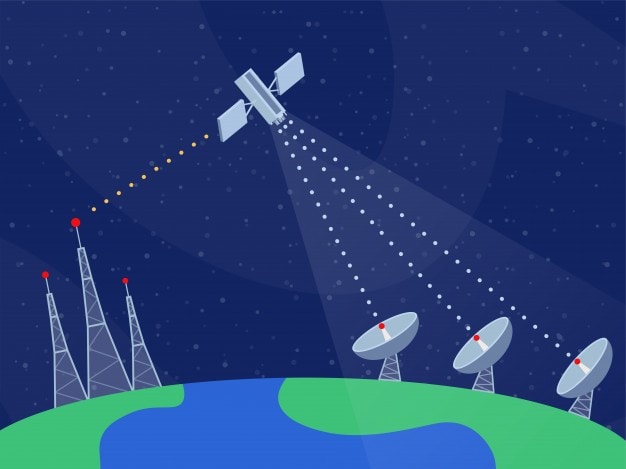Unlike broadcasting, narrowcasting is a specialized method that offers services and information specifically designed for particular target audience groups. It enables businesses to more effectively meet the demands of a certain targeted audience group by delivering more relevant and tailored communications to each customer. For instance, television shows with a narrow focus on the Middle East target specific populations based on things like language or religion.
Instead of providing a broad selection of content, television networks might focus on programming that appeals to particular demographics through narrowcasting. To maximize viewership, television networks tried to create better content to meet their target audience’s demands and interests.
Table of Contents
What is Narrowcasting?
An activity communicating a particular message to a chosen small group over a limited geographic area is known as “narrowcasting.” Its main goal is to deliver personalized advertisements based on prior purchasing behavior and the preferences of possible receivers.
In industries such as advertising, interactive narrowcasting is considered a significant strategy since it enables targeting particular audiences or groups to increase sales and build brand loyalty.
Now, let us quickly go over the examples below to help you understand which is superior:
Key Insights
- Targeted Approach: Narrowcasting delivers tailored content to specific, narrow audience segments.
- Effective Engagement: It enhances audience engagement by providing personalized and relevant messages.
- Cost-Effective: Narrowcasting is generally more cost-effective than broadcasting, as it minimizes wasted marketing spend.
- Diverse Applications: Used in various fields like advertising, digital signage, TV programming, and email marketing to reach niche audiences.
- Potential Disadvantages: The focus on specific groups and viewpoints can lead to conflict and narrow-minded perspectives.
What’s the difference between narrowcasting and broadcasting?
Narrowcasting is distributing content to a target audience according to their preferences, hobbies, or behaviors. For example, a gourmet pet food company would target pet owners who own organic items. By customizing messaging to the needs and tastes of that audience, this approach seeks to increase conversion rates by targeting particular age groups with high levels of engagement on social media platforms.
On the other hand, broadcasting distributes a broad, tailored message to a large audience, similar to the international marketing campaigns of well-known sports brands like Adidas or Nike. While this strategy increases visibility, it may not be as successful in building meaningful, individualized relationships with potential clients.
Broadcasting aims for quantity and wide visibility, whereas narrowcasting focuses on a specific segment and engages the most relevant people. These are the main differences in the message’s scope and customization.
Examples of Narrowcasting
Some of the key narrowcasting examples can be:
- Subscription-centric websites: Numerous online platforms, including social networking sites like Facebook, Instagram, Netflix, and YouTube, have seen considerable success with narrowcasting. By allowing users to narrowcast their content, they can target a specific audience, including a specific demographic or geographic area. Thanks to this focused strategy, companies can maximize the potential of every content they post on digital platforms.
- Narrowcasting on TV: Narrowcasting is extremely common on genre-specific television networks, such as news, music, and sports. These channels offer a personalized experience by focusing directly on each viewer’s unique interests. Every show they broadcast has extremely specialized content created for the particular audience they aim to reach.
- Mailing lists to subscribers: Companies can use narrowcasting to send customized content that speaks directly to specific subscribers in their email marketing campaigns. By doing this, they can target interested customers with the information they need and create an engaging experience. Narrowcasts enable companies to provide relevant, impactful messages that strongly Connect with users and make a lasting impression on them.
- Local News: Local news organizations, including newspapers, magazines, and television stations, can effectively target their audience with information created especially for them through narrowcasting. These media outlets can connect with populations of immigrants and migrants by focusing their content creation process on important topics and giving them relevant data.
Types of Narrowcasting
- In-store messaging
- Targeted social media ads
- Email marketing
- Direct mail marketing
- Mobile Marketing
- Personalized content
- In-store messaging: This involves sharing messages or promotions within a physical shop or space, enhancing the customer’s in-store experience.
- Targeted social media ads: Utilizes platforms like Facebook, Instagram, or LinkedIn to deliver ads tailored to users based on their interests and past behaviors.
- Email marketing: Sends specific messages or offers directly to an individual’s inbox, based on their preferences or previous interactions with the brand.
- Direct mail marketing: Employs traditional mailing methods to deliver personalized advertisements or information to a select group’s mailboxes.
- Mobile Marketing: Push notifications or SMS messages sent to a mobile device, offering timely and relevant information to engage users on the go.
- Personalized content: Designs content (articles, videos, podcasts) that caters to the interests and needs of a particular segment of an audience.
Why Narrowcasting?
Information provided to a specific group or target audience is known as narrowcasting. Several groups with particular interests exist around the globe. Organizations used to simply broadcast commercials to the whole public, but narrowcasting is a whole other story.
The narrowcasting approach helps marketers and advertisers pinpoint target audiences and craft messages only for them. Narrowcasting emphasizes certain public segments characterized by their demographics, tastes, and values rather than mass appeal to viewers.
Narrowcasting uses tools like
- Keyword-associated web advertisement
- Seminars
- Trade publications
- Direct mail
- Cable television
- Digital displays
Narrowcasting is the process of delivering visual content to a selected audience and target group at the right time and place.
How does Narrowcasting Work?
A focused type of broadcasting known as “narrowcasting” allows you to display media content on screens positioned in particular places after dividing it into specialized interests. This means you will not have to bother with less interesting or relevant information and can show your narrowcast audience the most relevant content.
A media player is the software you use to access major network narrowcasting content. Using a media player, you can easily incorporate narrowcasting into your current digital signage or narrowcasting networks. Because of their intuitive and user-friendly design, these media players make it simple to access and view narrowcasting content on screens situated in specific locations. This guarantees that the appropriate people, in the right places, view the material from a narrow perspective screen!
Where can you use Narrowcasting?
Narrowcasting installations have become integral to several sectors like public-venue markets, education, corporate, and retail. Some of the narrowcasting technology applications are as follows-
1. Point-of-wait
Narrowcasting is used to display important and relevant information, such as specific content, weather updates, or the place, time, and date of an upcoming event, to the workforce and visitors in corporate offices, museums, banks, hospitals, and hotels through point-of-wait.
It is specially designed to enhance the displayed message so that the target audience that is waiting there is exposed to an enhanced environment. Thus, the waiting period is utilized by the company at the point of wait via the display of tailored messages
2. Digital out-of-home advertising
It is now easy to reach the target audience with attention-grabbing content via digital out-of-home advertising on digital screens. Digital signage is interactive; hence, the viewers can easily engage with and associate with the displayed content outdoors.
The digital out-of-home application refers to digital displays like LED billboards and even shelf displays that can display the intended advertising and content in a public space.
3. Point-of-sale
Narrowcasting installations are independent stations specifically designed to provide a measurable return to the companies. They are used in a point-of-sale network close to a specific service or product so that consumers can easily encounter and identify them.
Local companies use the concept of narrowcasting to educate consumers about the availability of certain types of products. It is also used to cross-promote products and services and improve customer experiences in their outlets.
Advantages of Narrowcasting
The advantages of narrowcasting are as follows:
1. Connect with target audiences
Narrowcasting is an opportunity to connect with a target market of audiences defined by place, time, and activities. The process uses tailored content to address a particular segment via interactive digital displays. This helps in removing the cluster around it and establishing interest and relevance in actual potential buyers
2. Diversity of content
Several groups in the consumer market have specific interests. Narrowcasting helps to take specialized audiences and connect with them via different pieces of content that can meet the diversified demands of a broader audience.
The content can be consumer-service-oriented, promotional, or even entertaining and can also be presented with the help of various formats like moving or static images, flash, and video
3. Cost-effective
Narrowcasting is considered as cost-effective as the cost of developing and adjusting content to meet specific demands is low compared to broadcasting and other forms.
4. Customize personal message
Broadcasting a compact, personalized message intended for a certain demographic in a given place is made possible by narrowcasting. The best thing about narrowcasting communication is that your message does not need to be unclear.
Creating a connection with audiences through personalized content helps them remember and relate to it for a long time. It even enables information specifically relevant to expert groups to be delivered to them.
Simply put, there is no need to waste time and energy searching through unnecessary material in search of the data and information that will be helpful to them.
Disadvantages of narrowcasting
The various disadvantages of narrowcasting are as follows:
1. Gives rise to a conflict
Narrowcasting believes in targeting a specific group and promoting the division that forms because of this specification. It often encourages conflict between different groups and can lead to discontent. Political and social ideologies are prominently highlighted and can cause harm to society
2. Narrow-minded worlds
Narrowcasting allows the formation of groups. These groups are not exposed to different viewpoints of people. Their perspective is being enforced repeatedly, and it makes them believe that they are the ones who are right about everything. Narrowcasting leads to a narrow, one-minded world where you will find prominent conflict in mindset and approach.
How do you get the most out of Narrowcasting?
Narrowcasting is a practical approach that helps reach target audiences using specific and targeted content. It is necessary to create a clear and precise plan to be successful and effective. The following factors have an essential role to play in the success of this concept:
1. Define your target group
It is impossible to begin a process like narrowcasting that requires patience until you are clear in your thoughts. If you are trying to figure out how to make an effective narrow
2. Know about the placement
Placement is as important as the content, and both should be in sync so that it can enhance the meaning behind the words. Narrowcasting is a method that targets specific audiences at specific locations; hence, it is essential to know certain aspects, like how much time the visitors wait at a given point in time, so that the content can be tailor-made for such a specific period.
If the content displayed is either too short or too long, then in both cases, it will lose its impact and the meaning behind it. Carefully consider the digital signage program and placement if you are looking for ways to make an impact through narrowcasting
3. Balance narrowcasting content
Balance the promotional content if you are looking at ways to broadcast and narrowcast through digital signage effectively. Too much or even too little of anything is wrong, as it harms the overall customer experience and engagement.
4. Use audience analytics for measurement
It becomes easy to measure the success associated with narrowcasting in content management systems with the help of analytics. Various technologies in the market can detect, analyze, and measure customers’ responses toward the content on display.
The gathered information includes facial expressions, headcount, dwelling time, gender, age, etc. It becomes easier for an entity to measure success by looking at the audience’s behavioral metrics and demographic attributes.
Tips to make narrowcasting successful
A plan that appeals to a certain population needs to be properly crafted to guarantee successful narrowcasting and success. Here’s how to develop a unique narrowcasting strategy:
- Focus on the target audience. Create a precise mental image of your ideal customer.
- Context is key. Know the hubs your audience frequents.
- Use analytics to determine how well your attempts at outreach are working.
- Stay fresh with content; utilize ongoing research and conversations within your market to produce new material.
- Engage your audience with participation triggers such as prizes, questions, or benefits for their engagement.
- Incorporate engaging technologies. Instead of a standard company overview, consider an interactive timeline or quiz related to your field.
- Solicit direct feedback. For instance, after a series of webinars, offer a quick poll to attendees to determine the relevance and impact of the content presented.
Narrowcasting examples
Examples of narrowcasting media include all types of modern ways to reach a broad audience and specific groups of people you will be familiar with, such as:
1. Spotify:
Personalized Playlists: Spotify uses narrowcasting to create personalized playlists such as “Discover Weekly” and “Daily Mix” based on users’ listening habits and preferences.
2. Netflix:
Tailored Recommendations: Netflix offers personalized content recommendations to users based on their viewing history, ratings, and preferences, ensuring that users see the content most likely to interest them.
3. Facebook:
Targeted Ads: Facebook allows advertisers to narrowcast by targeting ads to specific demographics, interests, and behaviors, ensuring that the ads reach the most relevant audience.
4. Amazon:
Customized Shopping Experience: Amazon uses narrowcasting by showing personalized product recommendations and targeted ads to users based on their past purchases and browsing history.
5. Coca-Cola:
Local Campaigns: Coca-Cola often uses narrowcasting for its marketing campaigns by creating localized content that resonates with specific cultural and regional preferences, such as customized packaging and advertisements.
6. Red Bull:
Sports and Events: Red Bull narrowcasts by sponsoring and broadcasting extreme sports events and activities that appeal to their target audience, such as the Red Bull Air Race and Red Bull Rampage.
7. Nike:
Nike Training Club App: Nike’s training app uses narrowcasting to offer personalized workout plans and fitness content based on users’ fitness levels, goals, and preferences.
8. Hulu:
Targeted Content: Hulu offers narrowcasting by recommending shows and movies tailored to individual user profiles based on their viewing habits and preferences.
9. Pandora:
Custom Radio Stations: Pandora narrowcasts by creating custom radio stations for users based on their location, favorite artists, songs, and genres, providing a highly personalized listening experience.
10. Local News Channels:
Community-Specific Content: Local news channels use narrowcasting to deliver news and updates relevant to specific communities, addressing local events, weather, and issues of interest.
Conclusion!
In the end, we can cover the whole idea of narrowcasting with the following points:
- By utilizing all forms of media, including digital and print, organizations can create targeted messages that reach their desired audience. This is powerful communication at its finest!
- Employing targeted marketing has proven immensely useful in reaching niche audiences that can often be difficult to access through traditional mass media outlets.
- Additionally, it can be utilized for targeted news dissemination, an especially critical element in connecting different groups, like the Middle East Report and other such programs for Middle Eastern diaspora groups.
- Narrowcasting through niche marketing can be particularly advantageous when reaching the right people with your message.
- Popular cultures can be crafted to reach specific audiences and maximize their engagement by utilizing TV channels and digital media. These narrow-casted platforms create diverse experiences for specific groups with different interests.
Liked this post? Check out the complete series on Marketing



